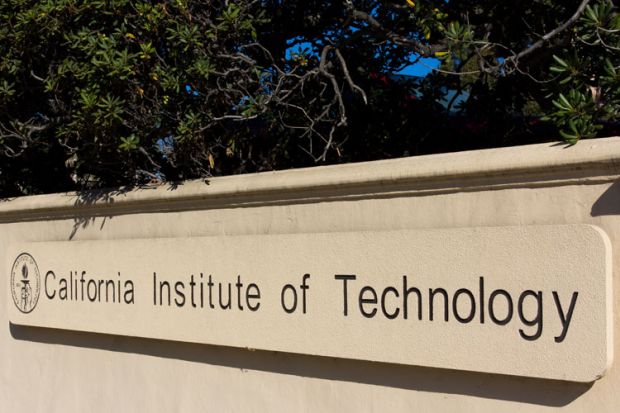Caltech: Astronomers Image Magnetic Fields at the Edge of M87’s Black Hole
The Event Horizon Telescope (EHT) collaboration, which produced the first-ever image of a black hole, revealed a new view of the massive object at the center of the M87 galaxy: a picture of its polarized light. This is the first time astronomers have been able to measure polarization, a signature of magnetic fields, this close to the edge of a black hole. The observations are key to explaining how the M87 galaxy, located 55 million light-years away, is able to launch energetic jets from its core.
“We are now seeing the next crucial piece of evidence to understand how magnetic fields behave around black holes and how activity in this very compact region of space can drive powerful jets that extend far beyond the galaxy,” says Monika Mościbrodzka, assistant professor at Radboud Universiteit in the Netherlands. Mościbrodzka is co-coordinator of the EHT Polarimetry Working Group with Ivan Martí-Vidal of the University of Valencia in Spain.
The results were published on March 24 in two separate papers in the Astrophysical Journal Letters by the EHT collaboration. Mościbrodzka will discuss the findings at an online event hosted by Caltech on Friday, March 26.
On April 10, 2019, scientists released the first-ever image of a black hole, revealing a bright ring-like structure with a dark central region: the black hole’s shadow. Since then, the EHT collaboration has delved deeper into the data on the supermassive object at the heart of the M87 galaxy and has discovered that a significant fraction of the light around the M87 black hole is polarized.
“We are now able to see a different dimension of the light circling the M87 black hole,” says Katherine L. (Katie) Bouman, assistant professor of computing and mathematical sciences, electrical engineering and astronomy, Rosenberg Scholar at Caltech, and co-coordinator of the EHT Imaging Working Group. “The image we reconstructed earlier showed us how bright the light was around the black hole shadow. This image is telling us about the direction of that light.”
Bouman is one of several Caltech researchers working with EHT. She helped develop the polarimetric imaging tools used to create the image and then helped use those tools to recover the structure of the polarization of light around the M87 black hole.
“Reconstructing an image of the polarization of light is, in theory, fairly similar to reconstructing the total intensity, which we showed in our April 2019 result,” Bouman says. “However, it is more challenging for a couple of reasons. Rather than recovering a single scalar value for each pixel in the image that indicates brightness, we now have to recover a 2D vector at each pixel. That means that we have the same amount of data, but there are more unknowns we are solving for.”
In addition, solving for an image of polarization requires the estimation of calibration terms that describe how the telescope’s instrumentation slightly distorts the measurements. “Most of the Polarimetry Working Group’s time was spent in trying to understand the uncertainties of these calibration terms and seeing their effect on the resulting polarization image. In the end, we are pretty confident that the same basic structure fits the data within the estimated uncertainties,” she says.
Postdoctoral associate in physics Junhan Kim developed instrumentation for the original data collection as a PhD student at the University of Arizona before coming to Caltech in 2019. “It was technically challenging to form a polarization-sensitive planet-sized array that can resolve the apparent size of the black hole. We even had to travel to some of the most remote sites in the world to install the instruments. I’m thrilled to see that we could produce interesting scientific results with the EHT array,” says Kim. Caltech postdoctoral research associates Aviad Levis and He Sun also contributed to the EHT collaboration’s work.
The research involved more than 300 researchers from multiple organizations and universities worldwide. To observe the heart of the M87 galaxy, the collaboration linked eight telescopes around the world to create a virtual Earth-sized telescope, the EHT. The Owens Valley Radio Observatory, which is operated by Caltech, is scheduled to join the EHT collaboration later this year.
“These observations highlight how magnetic fields influence the dynamics of material near the event horizon of the M87 black hole. This is a significant step towards understanding how black holes the size of our solar system launch jets of matter and energy that disrupt the evolution of whole galaxies,” says Vikram Ravi, assistant professor of astronomy at Caltech, who recently became involved with EHT.

